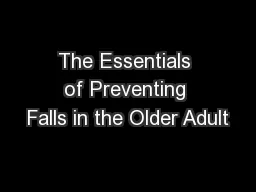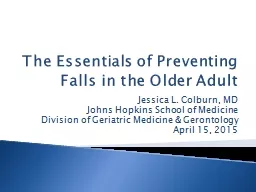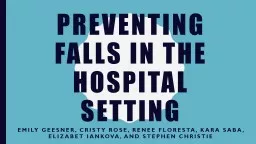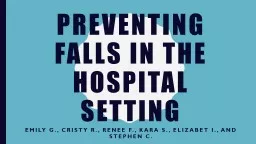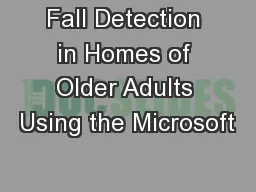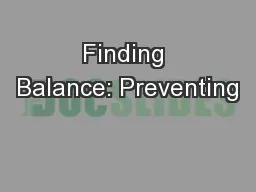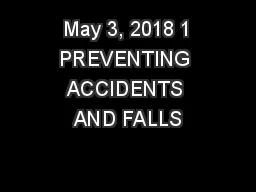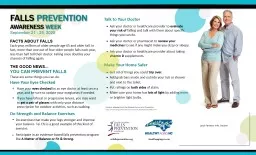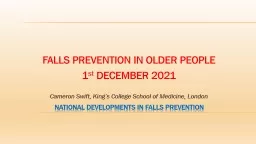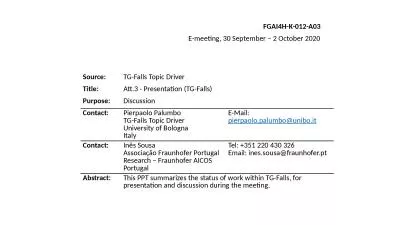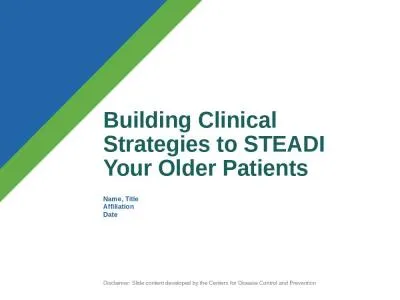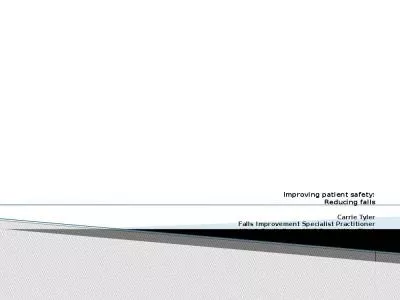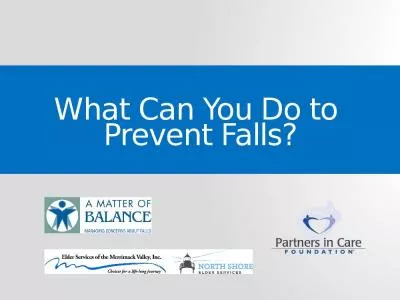PPT-The Essentials of Preventing Falls in the Older Adult
Author : giovanna-bartolotta | Published Date : 2018-11-01
Jessica L Colburn MD Johns Hopkins School of Medicine Division of Geriatric Medicine amp Gerontology April 15 2015 Discuss prevalence of falls in older adults Develop
Presentation Embed Code
Download Presentation
Download Presentation The PPT/PDF document "The Essentials of Preventing Falls in th..." is the property of its rightful owner. Permission is granted to download and print the materials on this website for personal, non-commercial use only, and to display it on your personal computer provided you do not modify the materials and that you retain all copyright notices contained in the materials. By downloading content from our website, you accept the terms of this agreement.
The Essentials of Preventing Falls in the Older Adult: Transcript
Download Rules Of Document
"The Essentials of Preventing Falls in the Older Adult"The content belongs to its owner. You may download and print it for personal use, without modification, and keep all copyright notices. By downloading, you agree to these terms.
Related Documents

